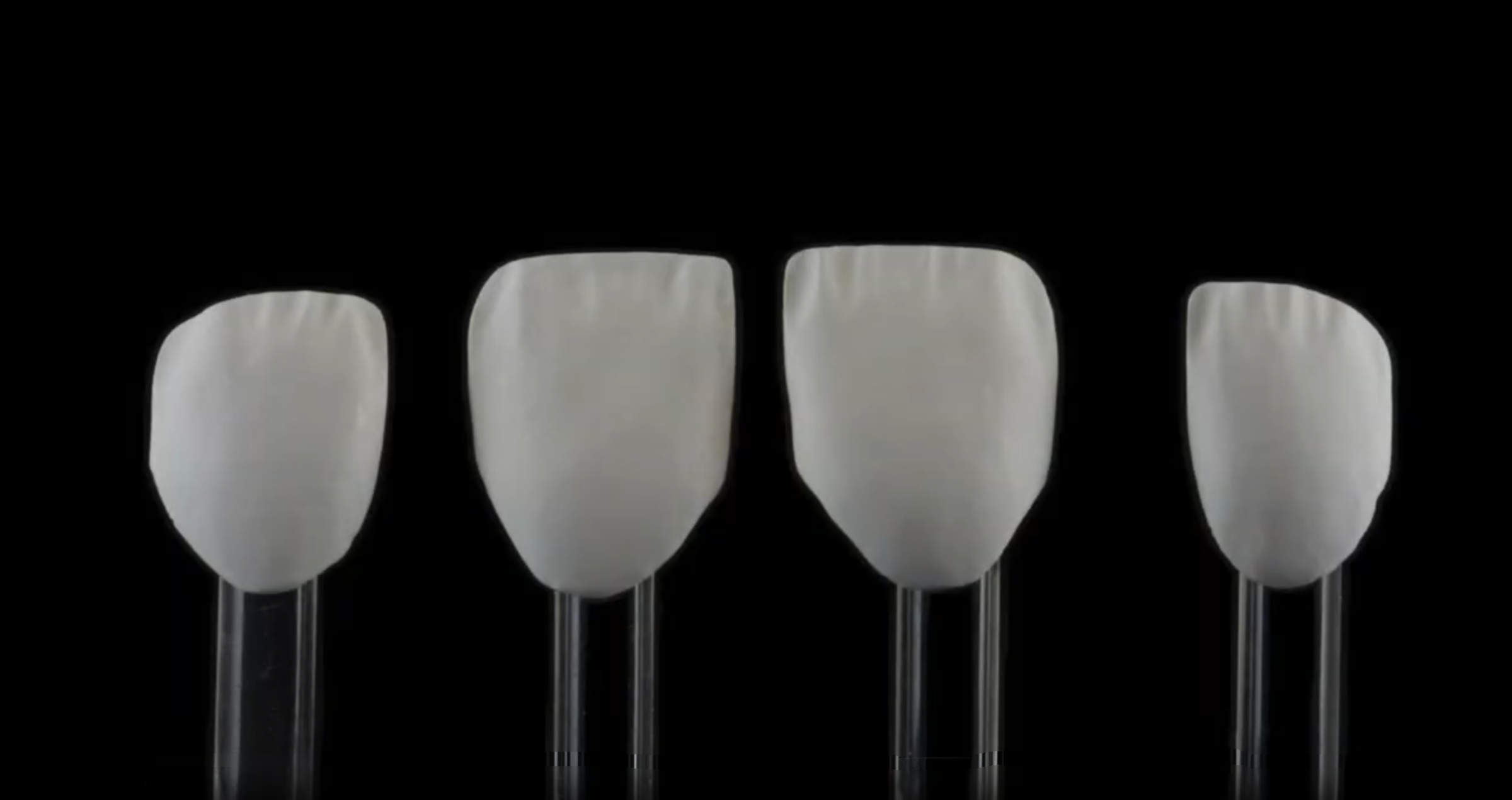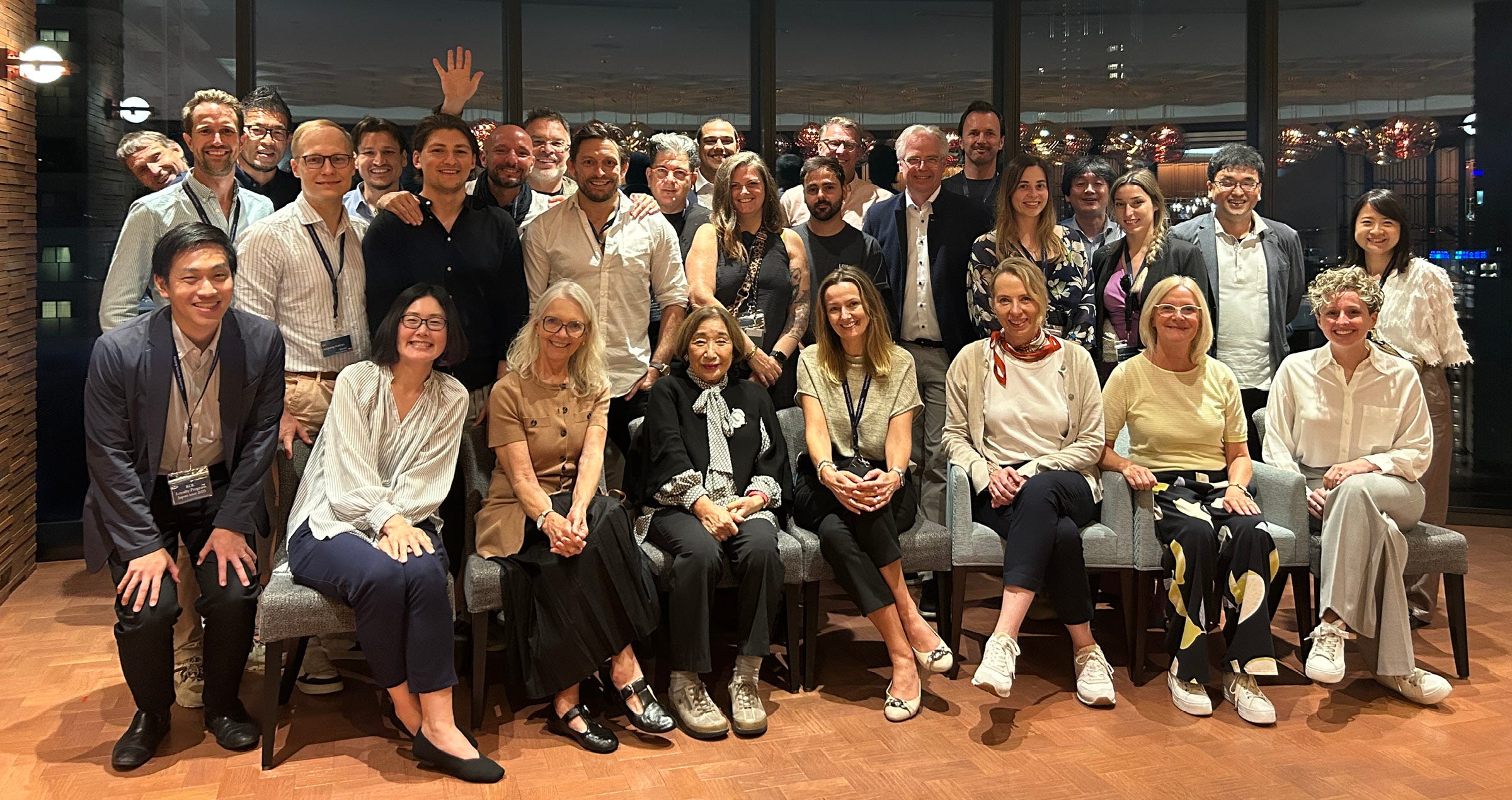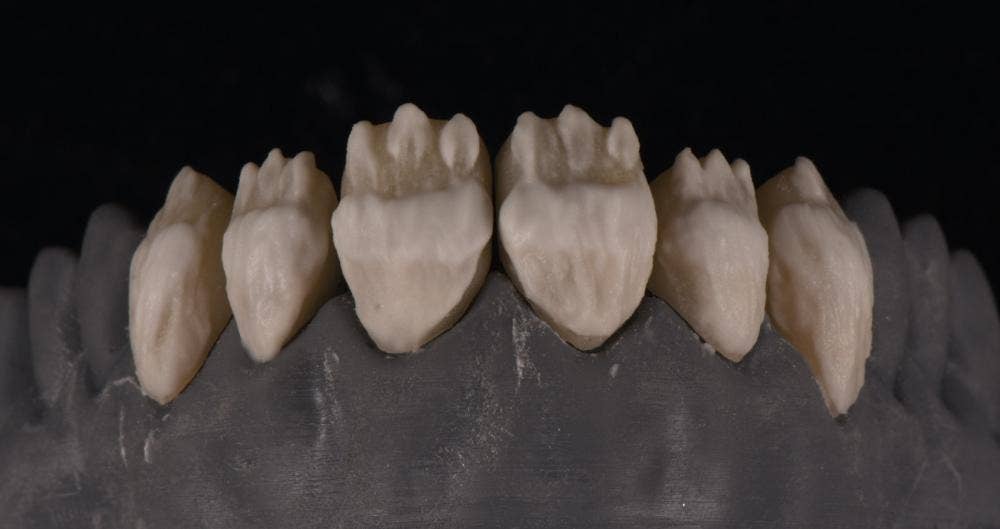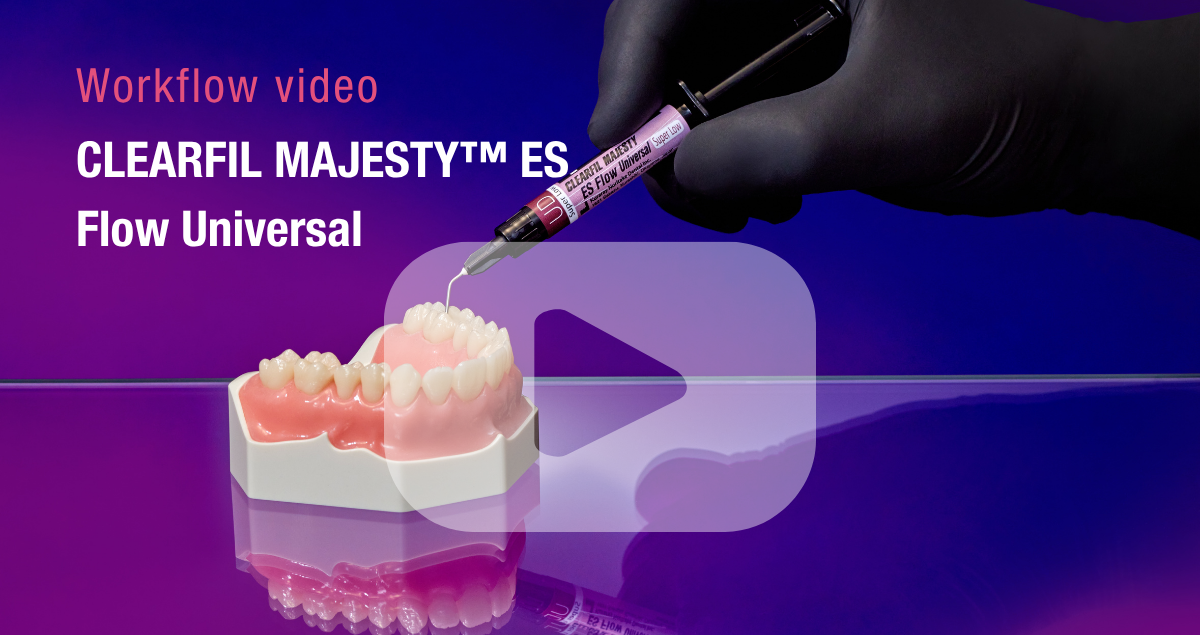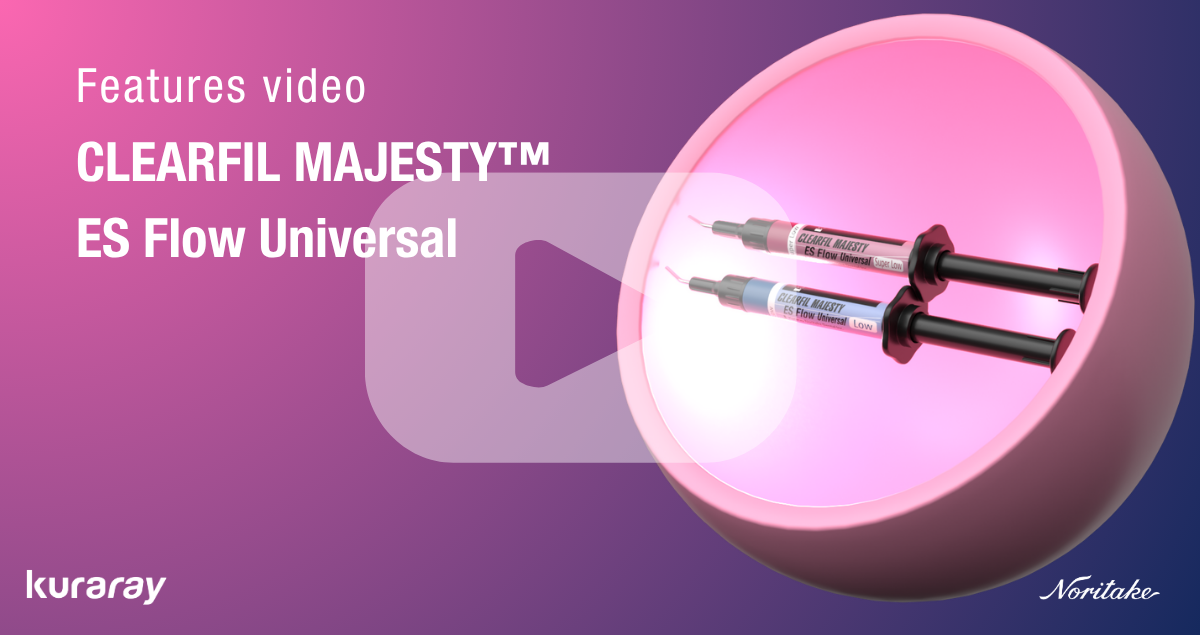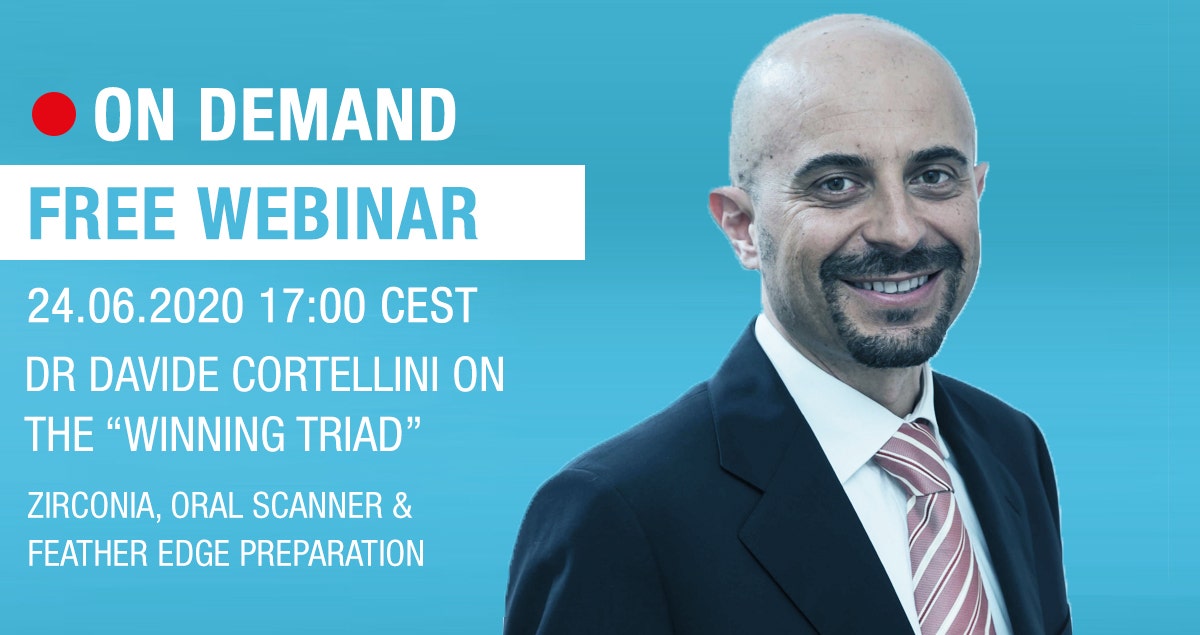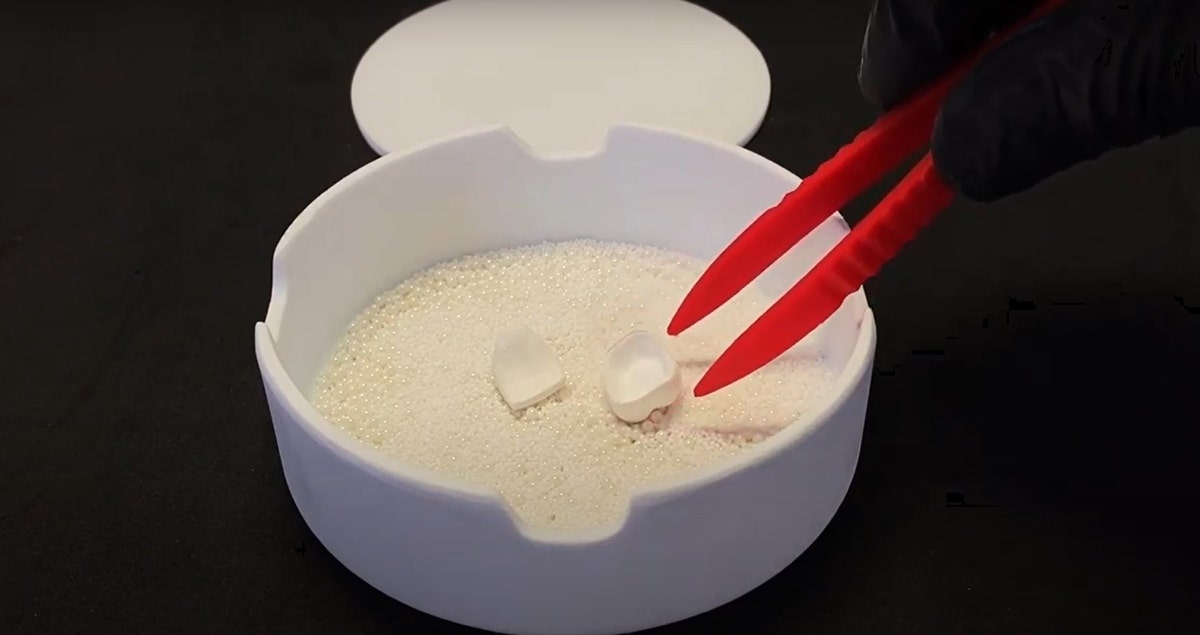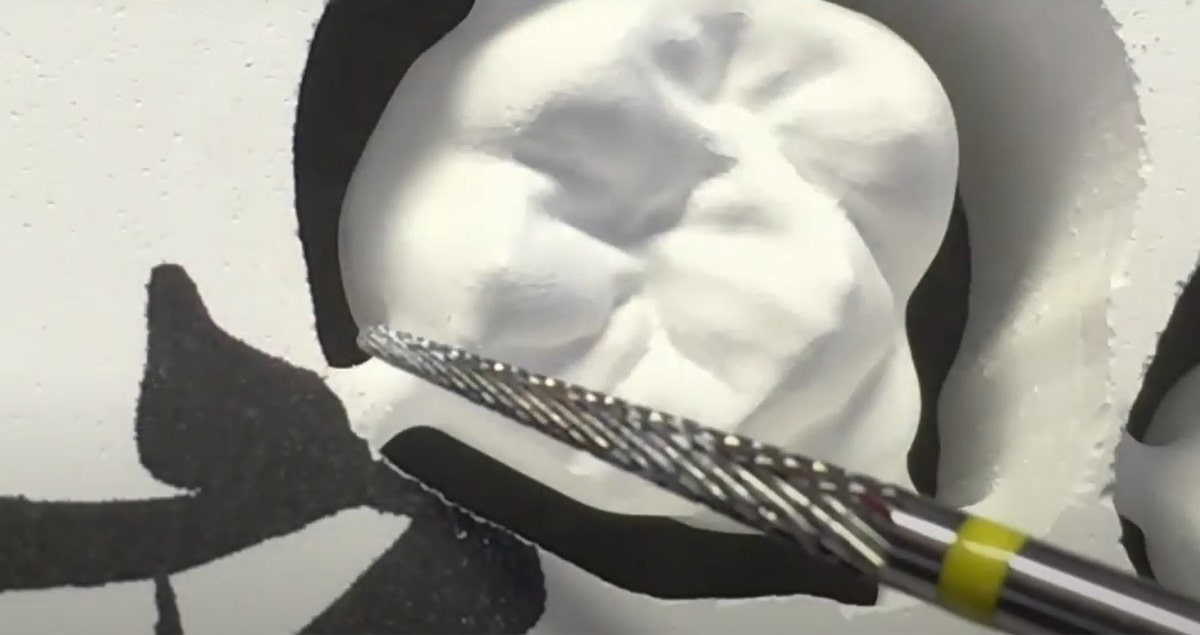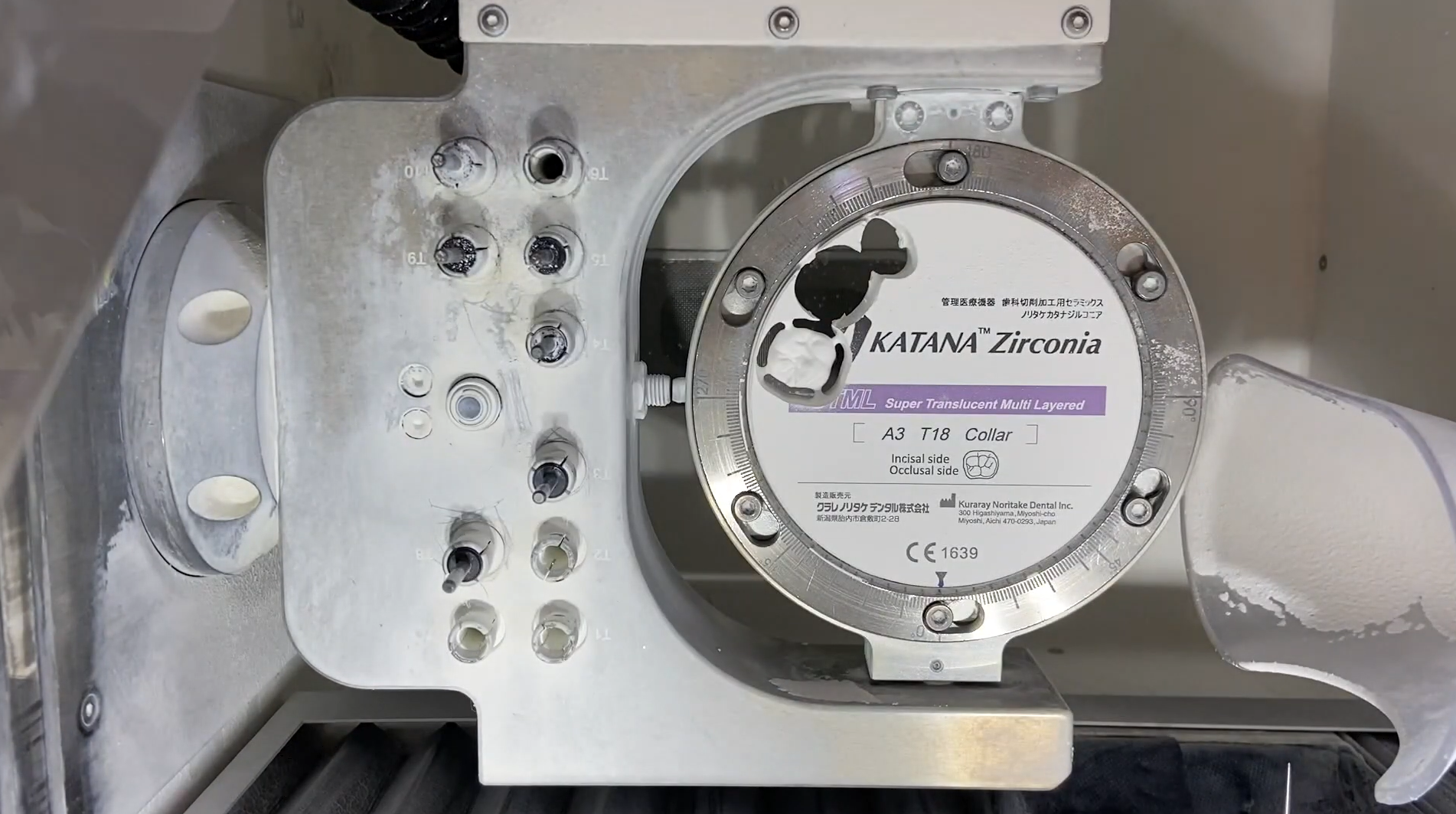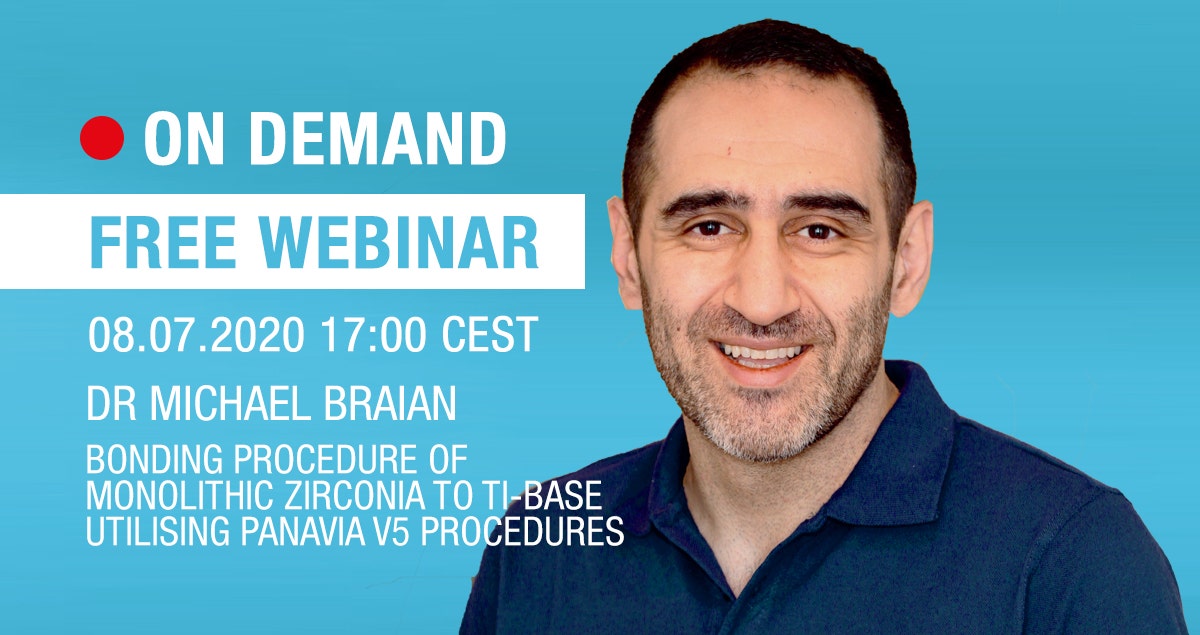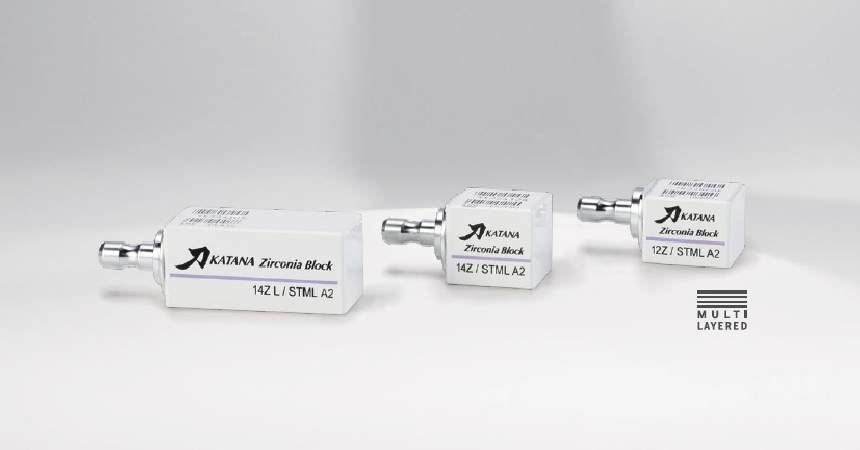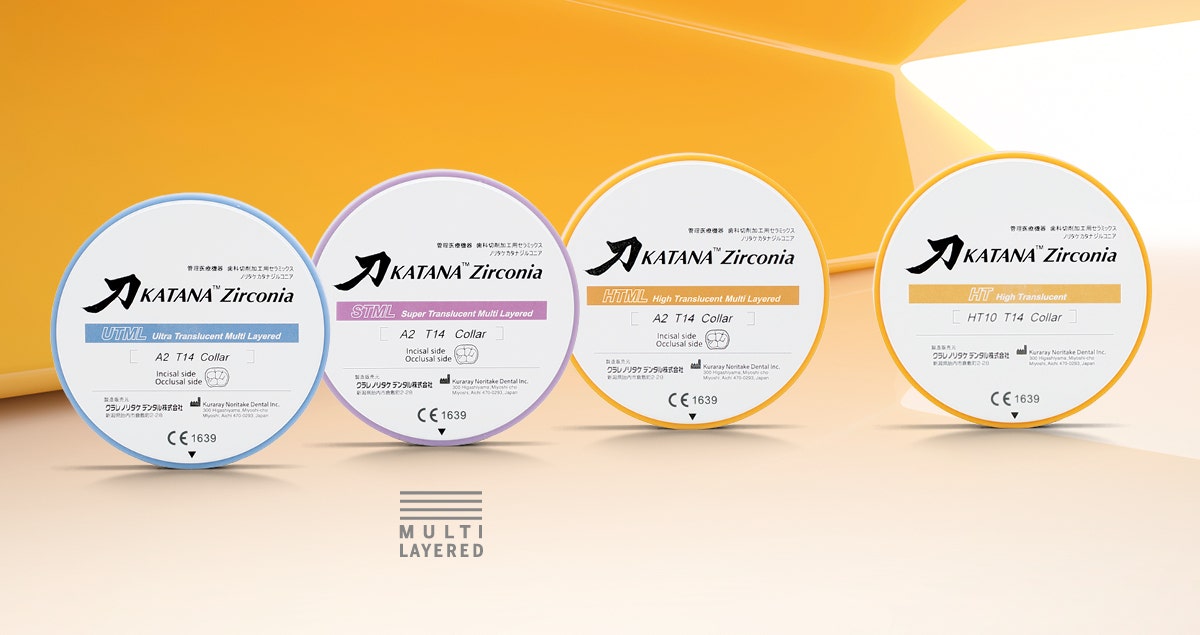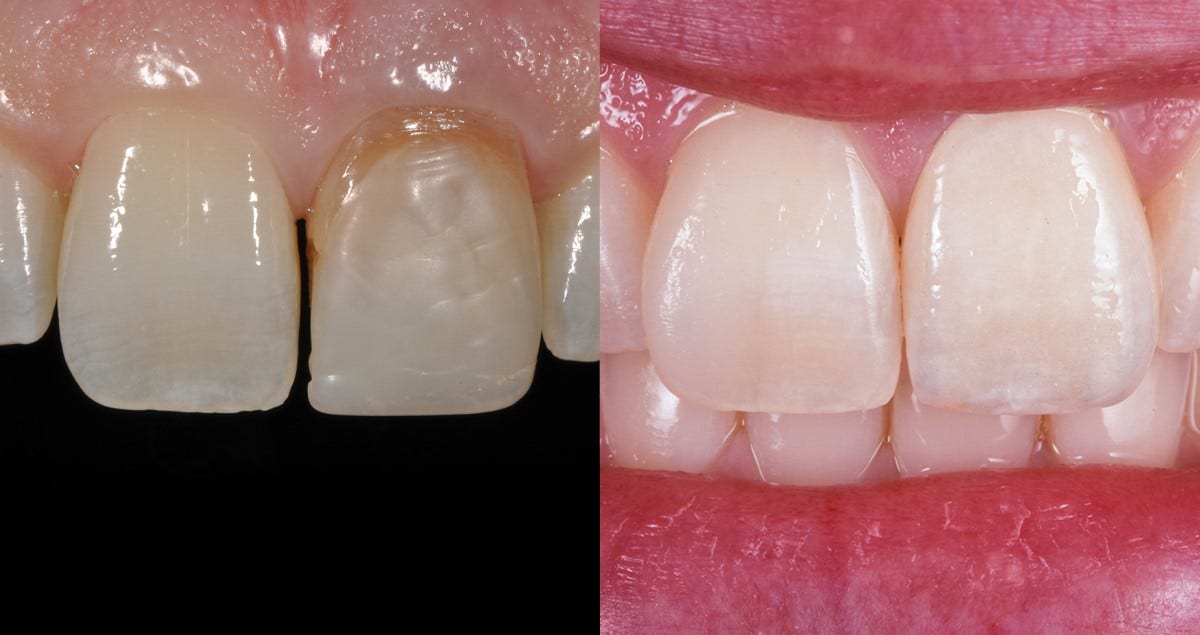By Dr Salvatore Scolavino and DT Francesco Napolitano
The dental laboratory is confronted with the greatest aesthetic challenge whenever it comes to the restoration of a single incisor with natural adjacent teeth. In the following case, a young patient had undergone endodontic treatment of her tooth 21 (fig. 1) while all other teeth showed their natural appearance. Tooth 21 was due for replacement now (fig. 2).
Fig. 1: X-Ray after endodontic treatment (with new crown on tooth 21 in place).
Fig. 2: The former restoration with which the patient showed up in the dentist’s practice.
To keep the natural identity, together with preserving the gingiva outline, the decision was taken in favour of a monolithic zirconia restoration, with a layered block for a full-contour crown. KATANA™ Zirconia STML (Kuraray Noritake Dental) provides for four gradational layers from „Body/Dentine“ (cervical area) to „Enamel“ (incisal aera), varying in chroma and translucency. Using this kind of milling block, it is possible to imitate the natural progression from yellowish to whitish-blue, and this in an easy manner. At the same time this way, the endodontic post wouldn’t shine through and make any aesthetic difference. On the other hand, the zirconia irradiates into the gingiva and results in a natural looking shade allover the anterior area. Furthermore for a lively and most natural-identical appeal, it was intended to individualize the crown by surface stains. With the product CZR™ FC Paste Stain by Kuraray Noritake Dental, 27 shades are available, together with fluorescence. What is essential in the front, too, is this well proven experience: All zirconia material enhances the close gingival attachment and provides for stable results of the pink-and-white aesthetics.
The dentist built up the stump 21, prepared it according to the specifications for zirconia and took the impression (fig. 3). The plaster model followed (fig. 4) and was scanned to start then the digital process. After designing, the crown was milled and tried-in at the next session with the patient (fig. 5).
Fig. 3: Impression taking after preparing tooth 21.
Fig. 4: Plaster model - the prothetic baseline of the case.
Fig. 5: Try-in of the zirconia crown in the patient’s mouth with rubber dam.
SHAPE AND COLOUR
Right when starting the case, the teeth of both jaws had been scrutinized: first for shape. Special attention was payed to the interproximale space between 11 and 21 because this area had worn out in the meantime (see again fig. 2). It was also necessary to move closer to each other the approximale margins 21/22 resp. 11/12 in their cervical-middle parts. When giving the zirconia crown its final shape, this resulted in a widely swinging outer line distally 21. For harmony reasons, tooth 11 was extended distally, too. Here, the clinician used the direct filling composite CLEARFIL MAJESTY™ Classic, shade A2 (fig. 6, 7 and 8). This nano-hybrid composite by Kuraray Noritake Dental is easy-sculpting and integrated fully with the milled crown.
It was most important for crown 21 and tooth 11 too, to create a 3D effect of the tooth structure and an age-appropriate vestibular surface texture. For this, the characteristics of the adjacent teeth and allover both jaws were examined meticulously in general and in detail. Surface burs, discs, stones, and similar instruments sophisticatedly engraved pericymatia and a groove here and there, thus accomplishing the perfect natural look.
Fig. 6: Tooth 11 before recontouring the shape distally.
Fig. 7: Finished crown 21 on the plaster model. Notice: In order to match the shape of crown 21 and close-up the margins 11/12, composite has been added in the interproximal space.
Fig. 8: Finishing the new distal outline of tooth 11.
The final colour touch was given to both teeth by surface staining: with a thin layer of FC Paste Stain measuring only 50-70 micrometers in depth, different shades were applicated. The entire range was used from yellow/orange to blue and white (fig. 9a-d) in order to provoke the effect of mamelons and other structures in all thirds of the restorations.
Fig. 9a: Definitive fitting of the restoration.
Fig. 9b: Directly after the fitting.
FINAL SITUATION
Fig. 9c: View of the lips with the restoration in place.
Fig. 9d: Natural look of the upper and lower jaws.


